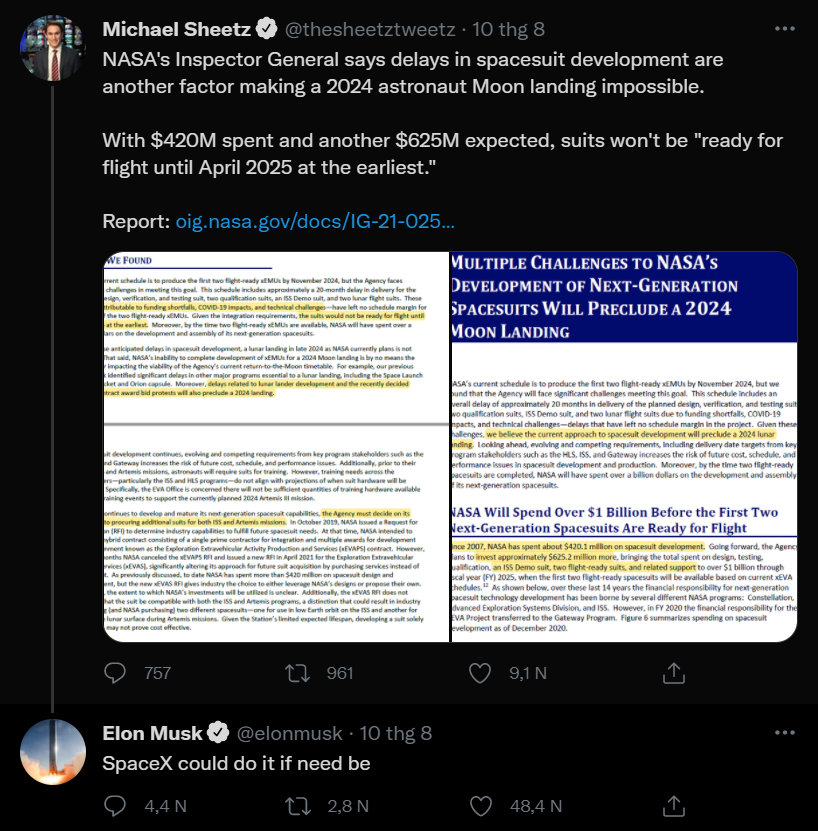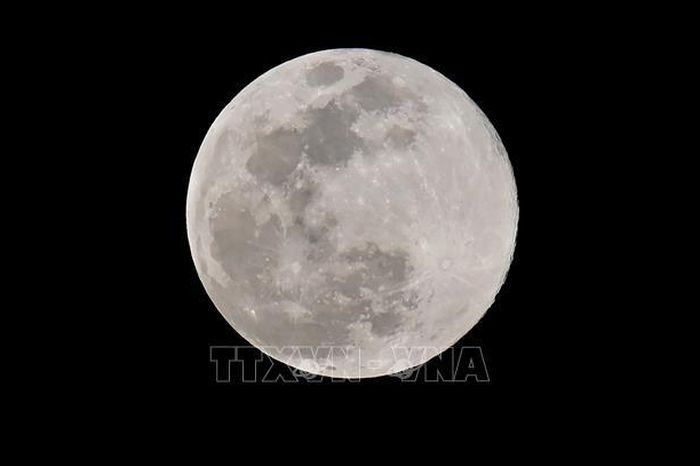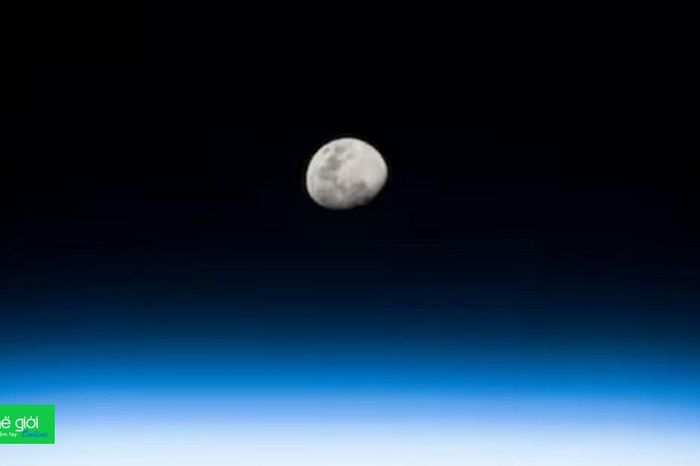NASA postpones plan to return humans to the Moon by 2024
NASA has published a new audit that casts doubt on its plans to return humans to the Moon by 2024.

The audit reads: "Delays related to the development of the Moon lander and the objections surrounding the recent tendering and awarding of the lander contract have precluded plans to land on the Moon in March. year 2024".
However, billionaire Elon Musk was quick to respond to NASA when he tweeted: "SpaceX can solve the delay in developing space suits for traveling on the Moon if needed." .
NASA only mentioned that arbitration of contract disputes in the Manned Landing System (HLS) program with companies like Jeff Bezos' Blue Origin could be part of the reason for delaying plans to the Moon.
NASA's next-generation suit is unlikely to arrive until April 2025.
NASA originally aimed to produce two next-generation spacesuits called Exploration Extravehicular Mobility Units (xEMU) by 2024, but the plan is in danger of falling apart.
Delays in planned design, verification, and testing forced delivery times back by about 20 months, in addition to one ISS Demo suit, two qualifying suits, and one Sun suit. other moon.
NASA attributed this delay to funding shortages, the impact of the Covid-19 pandemic and technical challenges. With the above difficulties, the spacesuits will have to wait until at least April 2025 to be completed.
NASA's audit also said it had no contingency plans as of June of this year, and warned that further delays to key components of the Space Launch System and HLS would prevent a landing. Moon in 2024.
But as SpaceX CEO Elon Musk suggested, SpaceX could become NASA's backup plan if the agency accepts his proposal.
Sharing on tweet, Elon Musk wrote: "SpaceX can do it if needed". This quote refers to building spacesuits to help NASA get back on track, or at least minimize delays in planning.

While NASA's next-generation spacesuit designs are in development, the agency said any design must support the Artemis mission, the Human Landing System (HLS) of NASA. SpaceX.
At the same time, NASA is struggling with the balance between HLS and ISS because the HLS Program needs the xEMU space suit for the Moon landing in 2024 but the ISS program needs the suits to replace the suit. The 45-year-old EMU is currently in use on the station.
NASA further emphasized that, while the path to the Moon by NASA and its partners is still on the way, one thing is for sure, without the next-generation spacesuits, the continued use of space suits. An aging base on the ISS will force the agency to incur costly maintenance fees, increasing the risk to astronauts.
In other words, future NASA space missions have been struggling in development. Without further help or funding from private aerospace companies such as Elon Musk's SpaceX, the plan is certain to be delayed.
You should read it
- NASA: 'Saturn's Titan moon will be our next stop'
- Why did the Soviets never set foot on the Moon?
- 7 future historic space missions of NASA
- Return to the historic moment when NASA spacecraft landed on the Moon through a re-created film from over 14,000 photos
- Discovering a 50 km long underground cave, 100 meters wide in the Moon may be a haven for people in the future
- New technology helps NASA find water, self-sufficient food on the moon
- The world's largest underwater cave system is found on the Yucatan Peninsula
- Watch the NASA Apollo 13 mission 50 years later
May be interested
- NASA needs you to help develop a digging robot on ... The Moon
 the robot called nasa's rassor is designed to dig under the surface of 'sister hang' in the near future.
the robot called nasa's rassor is designed to dig under the surface of 'sister hang' in the near future. - What are the requirements for becoming an NASA astronaut?
 nasa is stepping up the search for potential candidates for a young, enthusiastic new generation of astronauts ready to take part in missions to send humans to the moon, mars and possibly distant planets. more.
nasa is stepping up the search for potential candidates for a young, enthusiastic new generation of astronauts ready to take part in missions to send humans to the moon, mars and possibly distant planets. more. - Celebrating 50 years of human footing on the moon, Google built a portrait of Apollo 11 astronaut software engineer from 107,000 solar panels
 this day 50 years ago, july 20, 1969, apollo 11 spacecraft brought three astronauts to orbit the moon.
this day 50 years ago, july 20, 1969, apollo 11 spacecraft brought three astronauts to orbit the moon. - The Orion spacecraft successfully launched, beginning its journey to explore the Moon
 after many months of delay, sls - the most powerful rocket humanity has ever built has left the launch pad in florida, usa, carrying the orion spacecraft as part of the artemis i mission of the artemis program to bring humans to the moon again. 2025 and establish its first permanent presence here in the united states.
after many months of delay, sls - the most powerful rocket humanity has ever built has left the launch pad in florida, usa, carrying the orion spacecraft as part of the artemis i mission of the artemis program to bring humans to the moon again. 2025 and establish its first permanent presence here in the united states. - NASA took on the task of establishing standard time on the Moon
 on april 2, the us government directed the us aeronautics and space administration (nasa) to establish unified time standards for the moon and other celestial bodies, in the context of countries and private companies. everyone is intensifying the race to explore the universe.
on april 2, the us government directed the us aeronautics and space administration (nasa) to establish unified time standards for the moon and other celestial bodies, in the context of countries and private companies. everyone is intensifying the race to explore the universe. - NASA contemplates turning a moon crater into a giant, powerful telescope
 the far side of the moon would be a great place to stare out into the cosmos.
the far side of the moon would be a great place to stare out into the cosmos. - NASA sets standard time for the Moon
 according to reuters, the white house on april 2 directed the us aeronautics and space administration (nasa) to establish a unified standard for standard time (hour) for the moon and other celestial bodies.
according to reuters, the white house on april 2 directed the us aeronautics and space administration (nasa) to establish a unified standard for standard time (hour) for the moon and other celestial bodies. - Why does NASA want to set a time zone for the Moon?
 the us government tasked the space agency nasa with establishing a standard time zone for the moon, which will be called coordinated lunar time (clt).
the us government tasked the space agency nasa with establishing a standard time zone for the moon, which will be called coordinated lunar time (clt). - Why did the Soviets never set foot on the Moon?
 the dream of a soviet astronaut walking on the moon faded away on a launch pad in kazakhstan in the summer of 1969.
the dream of a soviet astronaut walking on the moon faded away on a launch pad in kazakhstan in the summer of 1969. - Over 12,000 people applied to fly to the moon and Mars as NASA Artemis astronauts
 as it turns out, a whole lot of people would like to visit the moon (and mars). nasa has received over 12,000 applications for its next class of astronauts, it announced this week.
as it turns out, a whole lot of people would like to visit the moon (and mars). nasa has received over 12,000 applications for its next class of astronauts, it announced this week.










 Suddenly discovered a completely new species in the dung pile more than 200 million years ago!
Suddenly discovered a completely new species in the dung pile more than 200 million years ago! Scientists have discovered a new ability of the elephant trunk
Scientists have discovered a new ability of the elephant trunk How many languages are there in the world?
How many languages are there in the world? Ophiojura - 8-legged starfish full of long, snake-like spines, 8 sets of jaws with sharp teeth
Ophiojura - 8-legged starfish full of long, snake-like spines, 8 sets of jaws with sharp teeth Octopuses are very intelligent, they can become candidates for the position of 'ruling the Earth' when humans are no more.
Octopuses are very intelligent, they can become candidates for the position of 'ruling the Earth' when humans are no more. 10 sounds that make people feel the most uncomfortable
10 sounds that make people feel the most uncomfortable